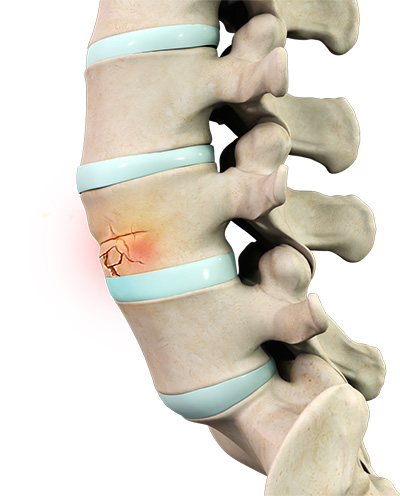A compression fracture of the vertebra occurs when the bones of the spine (vertebrae) collapse. Most commonly, these fractures occur in the thoracic or the middle portion of the spine.

Causes of Compression Fractures
A common cause of compression fracture in the spine is osteoporosis. This is a condition that makes the bones weak and unable to sustain normal pressure. Traumatic injury to the spine such as from a fall or motor vehicle accident can also cause fractures. Metastatic spread of cancer to the bones of the spine is another cause of vertebral fractures. Cancer leads to the destruction of part of the vertebra thus weakening the spine.
Symptoms of Compression Fractures
The symptoms of a compression fracture include severe pain in the back, arms, and legs. If the spinal nerves have been injured, there may be associated with numbness and a feeling of weakness. The pain will be milder in cases of osteoporotic fractures.
Diagnosis of Compression Fracture
Your doctor will make a diagnosis and determine the cause of pain based on your complete medical history and a physical examination. Some of the diagnostic tests that may be recommended include:
- X-ray of the spine: X-ray helps to locate the site where the vertebra is broken.
- CT and MRI scan: These are done to confirm that there is no nerve injury.
- Bone scan: Bone scan helps to estimate the age of fracture. If a bone scan shows older fractures that have healed, it indicates the possibility of osteoporosis.
- Neurological examination: It involves checking for reflexes, muscle strength, and sensory perception. Any abnormality indicates damage to the nerves.
Treatment for Compression Fracture
Compression fractures can be treated using both conservative treatment methods as well as surgical correction.

